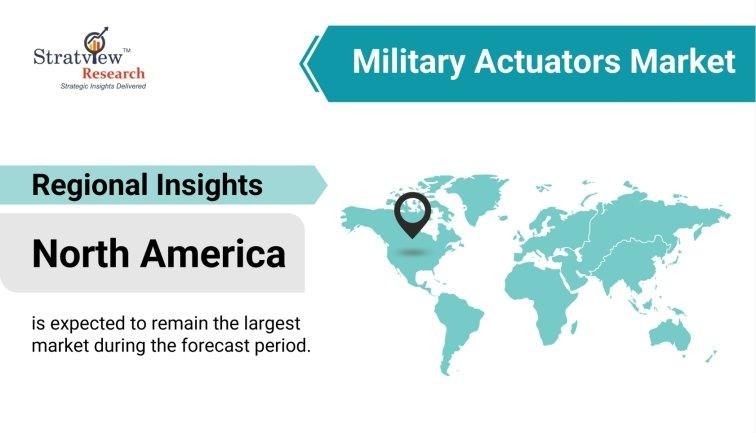Technological Advancements Reshaping the Military Actuators Market

The military actuators market is a highly competitive and dynamic sector, driven by technological innovation, geopolitical factors, and the need for advanced defense systems. In this article, we will delve into the competitive landscape of the military actuators market, highlighting key players, emerging trends, and the strategies employed to gain a competitive edge.
Key Players in the Market:
- Moog Inc. - Moog is a global leader in motion control technology, supplying high-performance motion solutions to the defense sector. The company's advanced actuators are integral components in military aircraft and weapon systems.
- Parker Hannifin Corporation - Parker Hannifin is known for its cutting-edge aerospace systems, including military actuators. Their actuators are crucial in the functioning of military aircraft, offering precision and reliability.
- Honeywell International Inc. - Honeywell offers a wide range of aerospace solutions, including actuators that play a vital role in flight control systems of military aircraft and UAVs.
- Curtiss-Wright Corporation - Curtiss-Wright specializes in ruggedized electronic and mechanical solutions, providing actuators for applications in armored vehicles and naval systems.
- Thales Group - Thales is a prominent global defense technology provider, offering advanced actuators for various defense applications, including naval vessels and missile systems.
Emerging Trends and Factors Driving Competition:
- Technological Innovation: In a bid to outperform competitors, companies are continually investing in research and development to create more efficient, compact, and reliable actuators. The integration of smart materials, like shape memory alloys and advanced sensors, has become a significant trend.
- Global Expansion: Many key players are expanding their global footprint by forming partnerships and subsidiaries in emerging markets, aiming to capitalize on the growing defense budgets in these regions.
- Customization: As military requirements become more diverse and specific, there's a growing demand for customized actuators. Companies are offering tailored solutions to meet the unique needs of their military clients.
- Cost Efficiency: Cost considerations are vital in the competitive landscape. Manufacturers are striving to produce cost-effective actuators without compromising on quality and performance.
- Supply Chain Resilience: The COVID-19 pandemic highlighted the importance of resilient supply chains. Companies are now diversifying their sources and ensuring a reliable supply chain to mitigate disruptions.
Strategies for Competitive Advantage:
- Innovation Leadership: Staying at the forefront of technological advancements is crucial. Leading companies invest heavily in research and development to introduce innovative solutions that address the evolving needs of the military.
- Partnerships and Collaborations: Collaborations with other industry players, research institutions, and government entities enable companies to access new markets and pool resources for large-scale projects.
- Diversification: Expanding product portfolios to include related sectors, such as aerospace or industrial applications, provides resilience against market fluctuations and broader growth opportunities.
- Global Presence: Establishing a global presence and local subsidiaries in key markets ensures proximity to clients and a deeper understanding of their needs.
- Customer-Centric Approach: Understanding the unique requirements of military customers and delivering solutions that exceed expectations can be a significant competitive advantage.
In conclusion, according to a report by Stratview Research, the Military Actuators Market was estimated at US$ 1.5 billion in 2021 and is expected to grow at a CAGR of 5.1% during 2022-2028 to reach US$ ~4.1 billion in 2028.
The military actuators market is characterized by intense competition driven by innovation, globalization, and a focus on meeting the evolving demands of the defense industry. Key players are investing in research and development, expanding their global reach, and customizing solutions to gain a competitive edge in this dynamic and critical sector. As defense systems continue to advance, the competition in the military actuators market is expected to remain fierce, with players striving to outperform one another in terms of technology, quality, and customer service.
- Art
- Causes
- Crafts
- Dance
- Drinks
- Film
- Fitness
- Food
- Spiele
- Gardening
- Health
- Startseite
- Literature
- Music
- Networking
- Andere
- Party
- Religion
- Shopping
- Sports
- Theater
- Wellness
- IT, Cloud, Software and Technology


